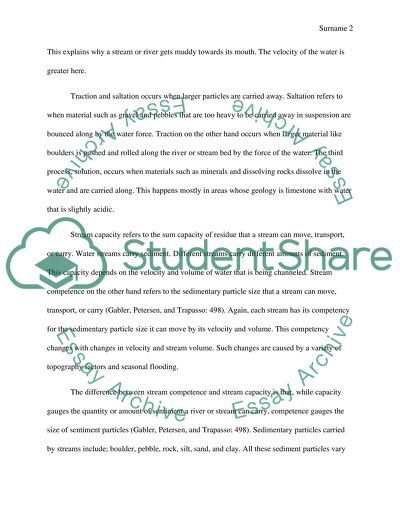Describe the 3 processes by which water in a stream/river can Essay. Retrieved from https://studentshare.org/geography/1647822-describe-the-3-processes-by-which-water-in-a-streamriver-can-transport-material-include-an-explanation-of-each-process-and-the-sub-process-essay-should-also-include-a-discussion-on-difference-between-stream-capacity-and-stream-competence
Describe the 3 Processes by Which Water in a stream/River Can Essay. https://studentshare.org/geography/1647822-describe-the-3-processes-by-which-water-in-a-streamriver-can-transport-material-include-an-explanation-of-each-process-and-the-sub-process-essay-should-also-include-a-discussion-on-difference-between-stream-capacity-and-stream-competence.


